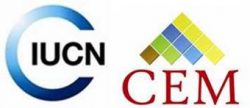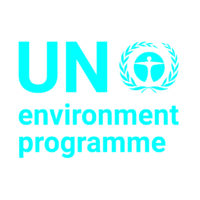Our Partners

United Nations University (UNU)- Institute on Comparative Regional Integration Studies (CRIS)
The United Nations University Institute on Comparative Regional Integration Studies (UNU-CRIS) is a research and training institute of the United Nations University. UNU is a global network of institutes and programmes engaged in research and capacity development to support the universal goals of the UN. It brings together leading scholars from around the world with a view to generate strong and innovative knowledge on how to tackle pressing global problems.
UNU-CRIS focuses on the study of processes of global cooperation and regional integration and their implications. It acts as a resource for the UN system, with particular links to the UN bodies dealing with regional integration, and works in partnership with institutes and initiatives throughout the world that are concerned with issues of integration and the provision of public goods.

G20 Global Land Initiative
The ambition of the G20 Global Initiative on Reducing Land Degradation and Enhancing Conservation of Terrestrial Habitats (G20 Global Land Initiative) is to achieve a 50 per cent reduction in degraded land by 2040. The Initiative, which was launched in 2020 under the G20’s Saudi Arabia Presidency, is hosted by the United Nations Convention to Combat Desertification (UNCCD) based in Bonn, Germany.

IUCN CEM
The Commission on Ecosystem Management (CEM) of the International Union for Conservation of Nature (IUCN) promotes ecosystem-based approaches for the management of landscapes and seascapes, provides guidance and support for ecosystem-based management and promotes resilient socio-ecological systems to address global challenges. CEM deals with the complexity of ecosystems, their components and interrelations, with people and cultures making different and often conflicting uses of the ecosystems, and therefore with institutions and regulations dealing with these uses. CEM has several Thematic and Specialist Groups most of which being of relevance to PEDRR activities, especially the Ecosystem-based Disaster Risk Reduction and the Nature-based Solutions Thematic Groups.

IFRC
The International Federation of Red Cross and Red Crescent Societies (IFRC) is the world’s largest humanitarian organization, providing assistance without discrimination as to nationality, race, religious beliefs, class or political opinions.
Founded in 1919, the IFRC comprises 192 member Red Cross and Red Crescent National Societies, a secretariat in Geneva and more than 60 delegations strategically located to support activities around the world. There are more societies in formation. The Red Crescent is used in place of the Red Cross in many Islamic countries.
The IFRC vision: To inspire, encourage, facilitate and promote at all times all forms of humanitarian activities by National Societies, with a view to preventing and alleviating human suffering, and thereby contributing to the maintenance and promotion of human dignity and peace in the world.

Centro Euro-Mediterraneo sui Cambiamenti Climatici
CMCC’s mission is to investigate and model our climate system and its interactions with society to provide reliable, rigorous, and timely scientific results to stimulate sustainable growth, protect the environment and develop science driven adaptation and mitigation policies in a changing climate. To develop foresights and quantitative analysis of our future planet and society.

United Nations University (UNU)-Institute for Water, Environment and Health (INWEH)
UNU-INWEH’s mission is to help resolve pressing water challenges that are of concern to the UN, its Member States, and their people, through critical analysis and synthesis of existing bodies of scientific discovery; targeted research that identifies emerging policy issues; application of on-the-ground scalable science-based solutions to water issues; and global outreach. UNU-INWEH carries out its work in cooperation with the network of other research institutions, international organisations and individual scholars throughout the world. UNU-INWEH is an integral part of the United Nations University (UNU). UNU-INWEH was established in 1996. Its operations are secured through long-term host-country and core-funding agreements with the Government of Canada. The Institute is located in Hamilton, Canada, and its facilities are supported by McMaster University.

Save the Children
Save the Children is the leading independent organization for children and their families, with an operational platform in 120 countries around the world. If more children are surviving and thriving than ever before, millions of children are still denied their most basic rights and unable to fulfil their potential. We are driven by three ambitious breakthroughs: Survive (no child dies from preventable causes before their fifth birthday), Learn (all children learn from a quality basic education) and Be protected (violence against children is no longer tolerated). In order to inspire these breakthroughs, we are focusing on reaching the most deprived and marginalised children and we are committed to leave no child behind in all contexts.

The United Nations Development Programme – Bureau for Crisis Prevention and Recovery (UNDP-BCPR)
Since 1966, UNDP has partnered with people at all levels of society to help build nations that can withstand crisis, empower communities, and drive and sustain the kind of growth that improves the quality of life for everyone. It has offices in more than 170 countries and territories.

United Nations Environment Programme
UN Environment Programme (UNEP) is the voice for the environment within the United Nations system. Established in 1972, UNEP acts as a catalyst, advocate, educator and facilitator to promote the wise use and sustainable development of the global environment. In response to increasing disaster risks, UNEP seeks to minimize threats to human well-being from environmental causes and consequences of disasters. UNEP’s Crisis Management Branch coordinates work on disaster risk reduction, and provides secretariat support to PEDRR.

The Global Fire Monitoring Center (GFMC)
As a member of the Inter-Agency Task Force for Disaster Reduction, the GFMC served as coordinator of the Working Group on Wildland Fire (2001-2003) and is in charge of coordination of the UNISDR Wildland Fire Advisory Group (WFAG), the UNISDR Global Wildland Fire Network (GWFN) and the International Wildfire Preparedness Mechanism (IWPM). Through Voluntary Commitments the IWPM is serving the implementation of the Sendai Framework.

The United Nations University – Institute for Environment and Human Security (UNU-EHS)
UNU-EHS is part of the United Nations University system, a worldwide network of Research and Training Institutes. Its mission is to advance human security through knowledge-based approaches to reducing vulnerability and environmental risks.

The United Nations Educational, Scientific and Cultural Organization (UNESCO)
UNESCO was created in 1945 to respond to the firm belief of nations that global peace is established on the basis of humanity’s moral and intellectual solidarity. UNESCO promotes cultural heritage and diversity, knowledge, and intellectual cooperation.

Asian University Network on Environment and Disaster Management (AUEDM)
AUEDM is a network of universities undertaking education and research in the field of environment and disaster management. It was established in 2008 and has 22 universities from 17 countries as members. It is hosted in the Kyoto University Graduate School of Global Environmental Studies.

International Institute for Sustainable Development (IISD)
IISD is an independent research institute that aims to promote human development and environmental sustainability through innovative research, communication and partnerships for 25 years. IISD operates in over 70 countries around the world and has offices in Canada, Switzerland and the United States. Its Resilience program strives to build and defend resilience of communities and ecosystems to face unprecedented risks and uncertainty.

The Global Risk Forum Davos (GRF)
GRF is based in Davos, Switzerland. GRF addresses the variety of risks that face communities, from natural hazards to technical and biological risks, from pandemics to terrorism – all across different political institutions, national and international organizations, countries and business sectors. It serves a Center of Excellence in knowledge and know-how exchange, technology transfer and application.

HELVETAS Swiss Intercooperation
HELVETAS Swiss Intercooperation is one of the most experienced and largest development organisations in Switzerland. It implements development projects, offers advisory services to governmental and non-governmental organisations and raises awareness concerning problems faced by people in developing countries.

Convention Biological Diversity (CBD)
Signed by 150 government leaders at the 1992 Rio Earth Summit, the Convention on Biological Diversity is dedicated to promoting sustainable development. Conceived as a practical tool for translating the principles of Agenda 21 into reality, the Convention recognizes that biological diversity is about more than plants, animals and micro-organisms and their ecosystems – it is about people and our need for food security, medicines, fresh air and water, shelter, and a clean and healthy environment in which to live.

Wetlands International
Wetlands International is the only global not-for-profit organisation dedicated to the conservation and restoration of wetlands. Dedicated to maintaining and restoring wetlands, our vision is a world where wetlands are treasured and nurtured for their beauty, the life they support and the resources they provide.

International Union for Conservation of Nature (IUCN)
Founded in 1948, IUCN is the world’s oldest and largest global environmental organization. It has more than 1,200 member organizations including 200+ government and 900+ non-government organizations. IUCN’s work is supported by voluntary scientists and experts, grouped in six Commissions in some 160 countries. It provides a neutral forum for governments, NGOs, scientists, business and local communities to find practical solutions to conservation and development challenges.

EUR-OPA Major Hazards Agreement – The Council of Europe
The EUR-OPA Major Hazards Agreement is a platform for co-operation in the field of major natural and technological disasters between Europe and the South of the Mediterranean. Its objectives are to reinforce and promote co-operation between Member States
in a multi-disciplinary context to ensure better prevention and protection against risks and better preparation in the event of major natural or technological disasters. The Agreement is part of the Council of Europe – the continent’s leading human rights organisation. It includes 47 member states, 28 of which are members of the European Union. All Council of Europe member states have signed up to the European Convention on Human Rights, a treaty designed to protect human rights, democracy and the rule of law.

World Wide Fund for Nature International (WWF)
WWF seeks to safeguard our planet’s natural environment, and build a future in which humans live in harmony with nature. It works to protect biodiversity and reduce the negative impacts of human activities.

Ramsar Convention
The Convention on Wetlands of International Importance, also known as the Ramsar Convention, is an international treaty for the conservation and sustainable utilization of wetlands, recognizing the fundamental ecological functions of wetlands and their economic, cultural, scientific, and recreational values. It is named after the city of Ramsar in Iran, where the Convention was signed in 1971. Presently, there are 169 Contracting Parties to the Convention, whose headquarters is located in Gland, Switzerland.

The Nature Conservancy (TNC)
The Nature Conservancy is a global conservation organization dedicated to conserving the lands and waters on which all life depends. Guided by science, we create innovative, on-the-ground solutions to our world’s toughest challenges so that nature and people can thrive together. We are tackling climate change, conserving lands, waters and oceans at an unprecedented scale, providing food and water sustainably and helping make cities more sustainable. Working in 79 countries and territories, we use a collaborative approach that engages local communities, governments, the private sector, and other partners. To learn more, visit www.nature.org or follow @nature_press on Twitter.

The Global Network of Civil Society Organisations for Disaster Reduction (GNDR)
The GNDR is the largest international network of organisations committed to working together to improve the lives of people affected by disasters world-wide. Our vision is a vibrant, active, collaborative civil society supporting people and their communities, particularly poor and vulnerable groups, to prepare for, mitigate, respond to and recover from disasters, and adapt to hazards and a changing climate.

The Asian Disaster Preparedness Center (ADPC)
ADPC is a leading regional resource center that works towards the realization of disaster reduction for safer communities and sustainable development in Asia and the Pacific. Since its inception in 1986, ADPC has been recognized as the major independent center in the region for promoting disaster awareness and the development of local capabilities to foster institutionalized disaster management and mitigation policies.

Swiss NGO DRR Platform
Following the Hyogo Framework for Action 2005-2015, we, as the Swiss NGO community, decided to work jointly on resilience, by addressing disaster risks through prevention, risk mitigation, preparedness and response. In 2011, the Swiss NGO DRR Platform was founded with the aim to capture the existing knowledge and experience, to exchange and coordinate and to increase effectiveness and quality of Swiss NGOs work related to Disaster Risk Reduction (DRR) and Climate Change Adaptation (CCA).

Stockholm Environment Institute (SEI)
SEI is an independent research institute. SEI has been engaged in environment and development issues at local, national, regional and global policy levels for more than 20 years.

The United Nations Office for Disaster Risk Reduction (UNDRR)
UNDRR (formerly UNISDR) is the United Nations focal point for disaster risk reduction. UNDRR oversees the implementation of the Sendai Framework for Disaster Risk Reduction 2015-2030, supporting countries in its implementation, monitoring and sharing what works in reducing existing risk and preventing the creation of new risk.

Mercy Corps
Mercy Corps is a global team of humanitarians, working together on the front lines of today’s biggest crises to create a future of possibility, where everyone can prosper. Our mission is to alleviate suffering, poverty and oppression by helping people build secure, productive and just communities. In more than 40 countries around the world, our nearly 6,000 team members work side by side with people living through poverty, disaster, violent conflict and the acute impacts of climate change.